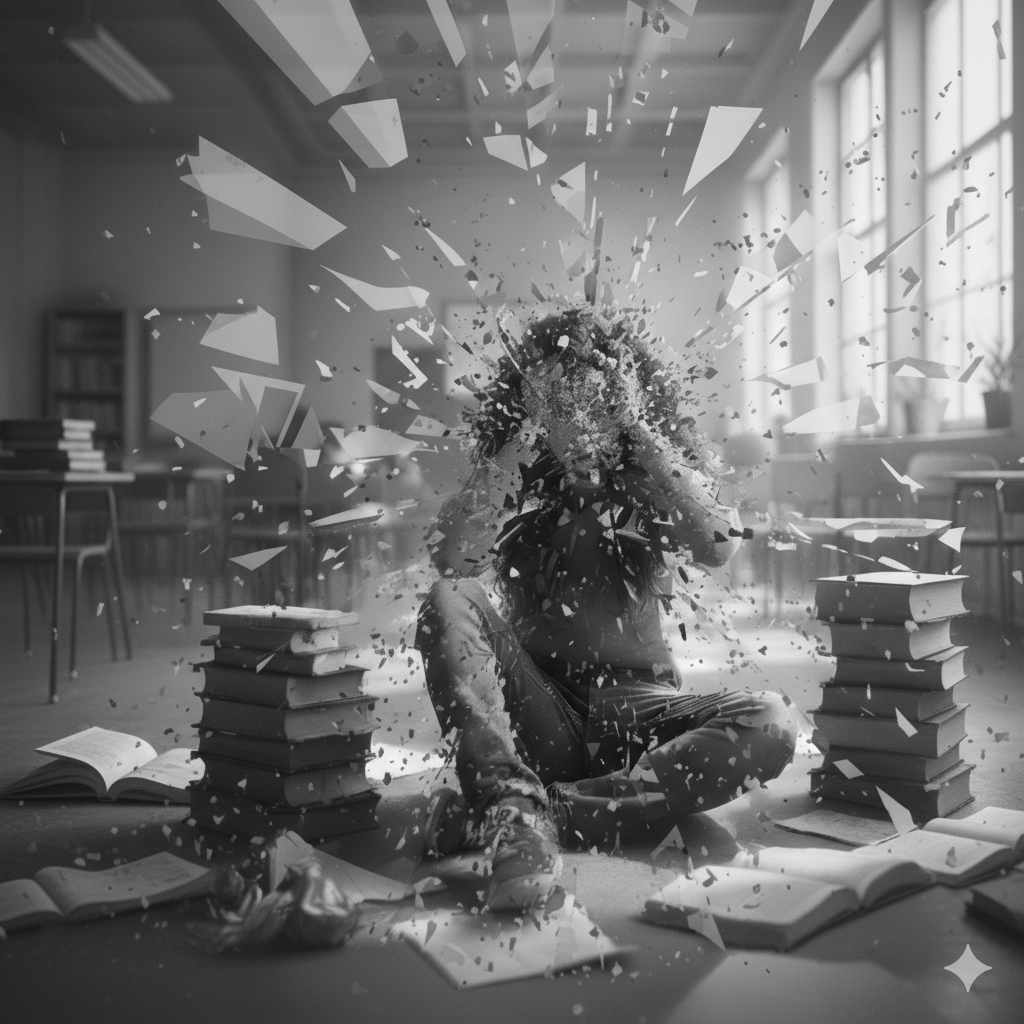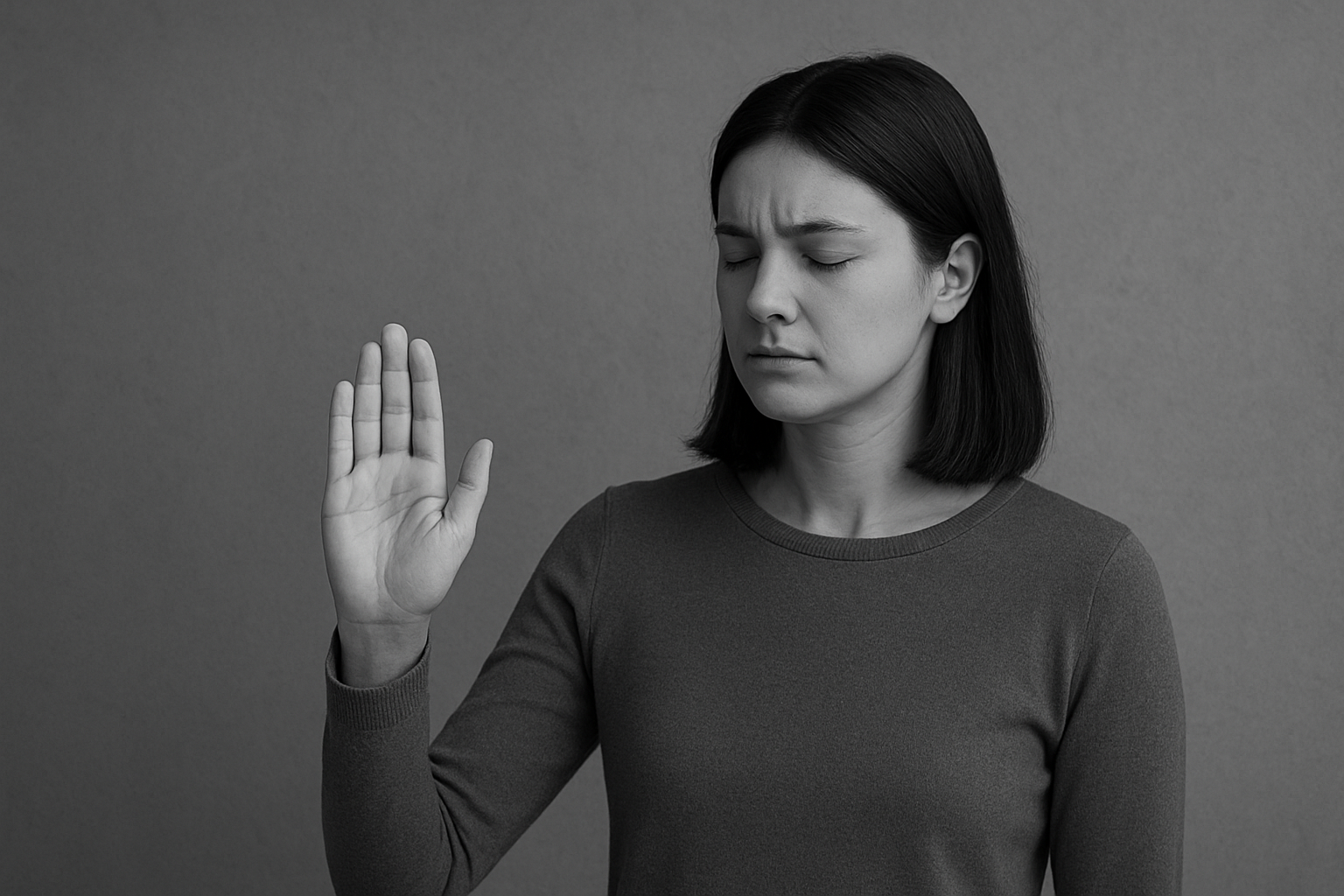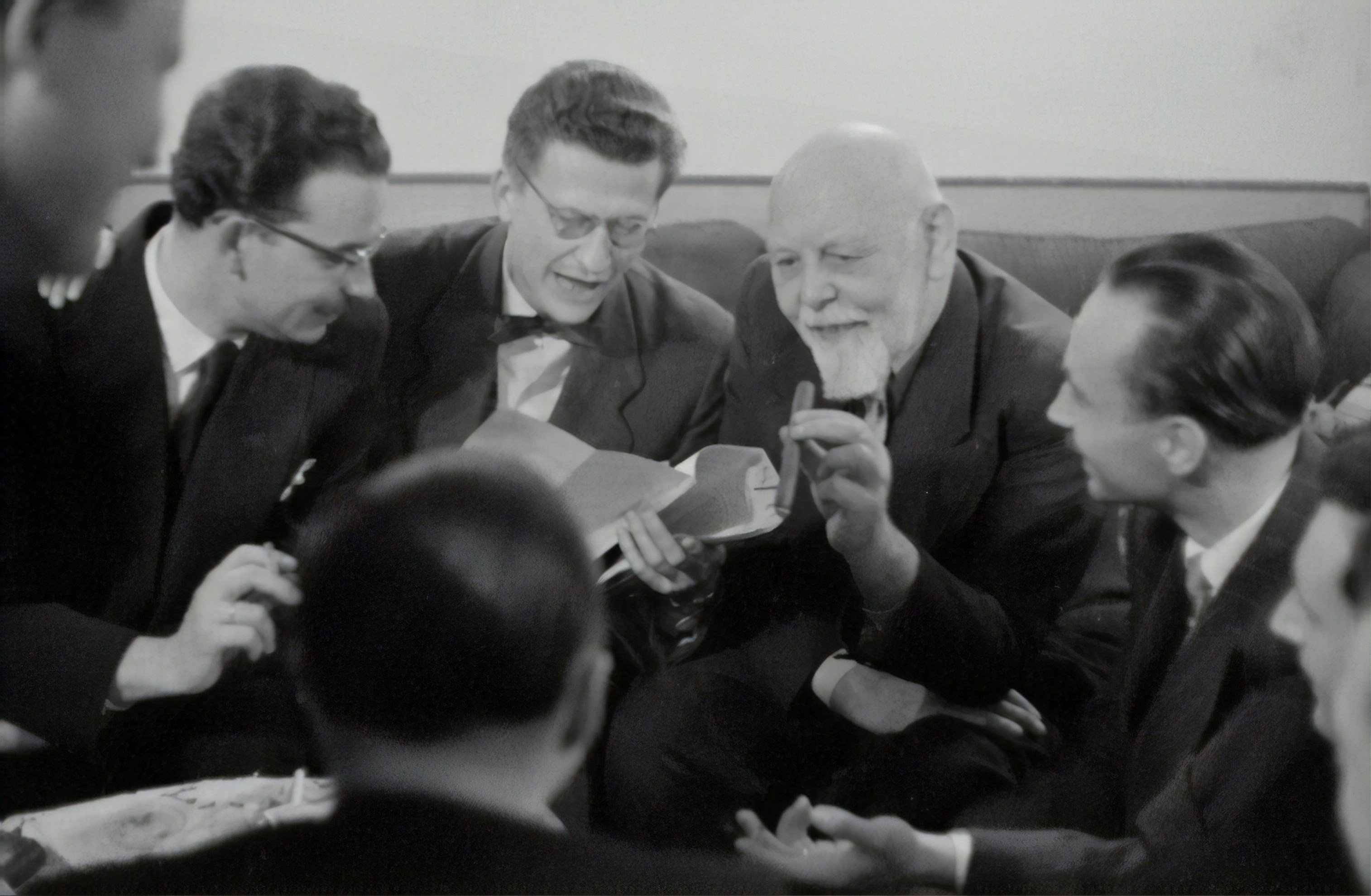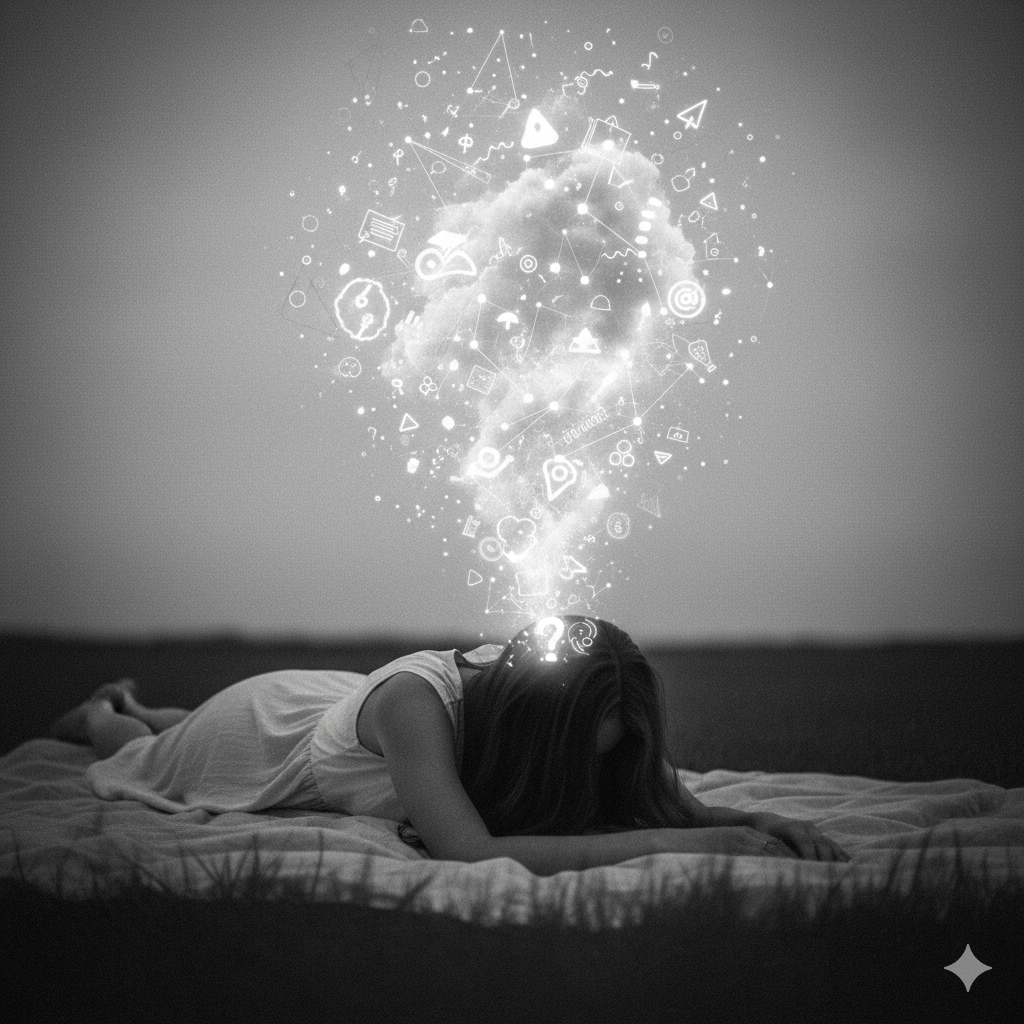I remember my first IIT-JEE exam like it was yesterday. The moment I entered the exam hall, I realized something was wrong. The rhythm of my breathing was not normal.
Gradually, I began to feel like there was no more air, and I was suffocating. My whole body felt hot and flushed. I could not read or understand the questions. That was the first time I’d been through such an experience. I genuinely felt like I was dying.
But it didn’t stop there. The same thing repeats in every exam hall and every big moment in life. I didn’t understand why I was suffering so much or that it was because of anxiety disorder.
Behind the Smile: Daily Struggles
I carried anxiety with me every time I faced an exam. It caused breathlessness, trembling, and disorientation: anxiety disorder symptoms that crippled my performance. As a result, I failed or underperformed repeatedly. This began to erode my confidence and steer my life in directions I never wanted to go.
I grew up carrying the weight of these experiences, and nobody ever helped me realize that this wasn’t just “nerves”; I was experiencing an anxiety disorder. No one explained that help was possible.
Over time, this struggle gave birth to insecurity and a deeply damaged self-image. I sank into depression and gloom. People mocked me, saying I acted like I knew a lot but always failed to deliver. Their words cut deeply. Eventually, I believed I was simply “good for nothing.”
”In terms of anxiety disorder symptoms among adults in the U.S., a 2019 survey found that 9.5% had mild symptoms, 3.4% had moderate, and 2.7% had severe symptoms of anxiety in the past two weeks. Women were more likely than men to report these symptoms.
National Center for Health Statistics (CDC) USA
College, Patriarchy, and Quiet Torment
By fate, I landed in a government engineering college, not by design, but by default. Unlike school, college exposed me to harsh realities: patriarchy, bias, and institutional silence. I spoke up when I saw injustice. I questioned authority. That only worsened things. My academic life became a battleground.
Those years left scars. Once I graduated, I was fearful, paranoid, and bedridden with anxiety. The causes of anxiety disorder in my life were many: unrelenting pressure, social judgment, lack of emotional support, and environments that stifled mental health.
Lost Years and Risky Turns
After college, I got a placement. But I couldn’t hold it. The same patterns repeated. The same toxic environments, the same unspoken biases. Then I decided to prepare for the UPSC Civil Services Examination; not because I was confident, but because I felt I had no other option. I believed I couldn’t survive in a typical private sector job anymore.
Surprisingly, UPSC prep gave me two things:
- I discovered that I did have potential.
- I admitted to myself that something was wrong; something I couldn’t ignore.
Still, the anxiety disorder stayed. I remained anxious, overthinking, and trapped in retrospection. Years passed with the same battle, day after day.
When Reality Became Clear
In 2023, I finally sought professional help. There were countless barriers, including finances, accessibility, lack of courage, and lack of understanding from others. But at last, I crossed the threshold.
I was diagnosed with Borderline Personality Disorder (BPD) and an anxiety disorder. Suddenly, all my panic attacks, breathlessness episodes, and overthinking had names. All along, people had labeled me as “dramatic.” My story was dismissed. But now I knew better.
Now I understand that anxiety disorder in adults is a real medical condition, not a moral failing or attention-seeking. I’m still not completely free from its grip, but I am fighting and healing.
Anxiety Disorder – Numbers That Speak
You are not alone in this. Around 19.1% of U.S. adults have experienced any anxiety disorder in a given year. Lifetime prevalence is even higher, over 30%. Globally, an estimated 4.05% of the population lives with an anxiety disorder, equivalent to more than 301 million people.
Among adolescents, the picture is even more alarming. In the U.S., 31.9% of adolescents (ages 13–18) have reported an anxiety disorder in their lifetime. According to the World Health Organization, roughly 4.1% (ages 10–14) and 5.3% (ages 15–19) of teenagers live with an anxiety disorder. For children aged 3–17 in the U.S., about 11% have a diagnosed anxiety disorder.
In a more recent survey, nearly 1 in 5 adolescents reported symptoms of anxiety or depression. Also, anxiety disorder in teens is the most common mental health condition they face.
Paths to Coping and Recovery
Understanding and coping with anxiety disorder doesn’t mean erasing it overnight. It means building strategies to live with it more peacefully. For me, seeking therapy, building self-awareness, and practicing tools like breathing exercises, journaling, and small routines became lifelines.
Therapy helped me see my triggers and patterns. Medication, when needed, gave me stability. Community and honest conversations erased isolation.
I still haven’t mastered every day. The fight continues. But I breathe easier now. I recognize my anxiety episodes before they overwhelm me. I carry knowledge, not shame.
Why This Matters
So many people suffer in silence, especially those who don’t have access or who fear judgment. Some don’t even know what’s wrong. Whether you are an adult battling stress at work or an adolescent grappling with school anxiety, you are not alone.
We must talk openly about anxiety disorders in adults and anxiety disorder in teens, highlight anxiety disorder symptoms, explore causes of anxiety disorder, and promote coping with anxiety disorder strategies. Only then will we break the stigma.
Thought – The Wellness App
My journey led me to build something meaningful. I created ‘Thought’ – The Wellness App to bring mental health care closer. I want no one else to feel trapped and voiceless.
This app is for everyone, whether you’re dealing with exam stress, workplace anxiety, or everyday worry. It aims to connect you with help, resources, community, and understanding.
Soon, Thought will launch on app stores. I hope that it becomes a companion for anyone dealing with anxiety disorder. A reminder that mental well-being is not a luxury, it’s a necessity.
A Final Word
Today, I know who I am and what my conditions are. The journey hasn’t ended, but it’s richer now, threaded with awareness, acceptance, and hope. I believe that sharing this story can encourage others to seek help, understand their symptoms, and reclaim their lives.
Gift yourself with mental health and well-being. Thought is here to walk with you.
Did you like this post? For more posts, visit my blog.
You can throw your feedback or enquire, or even get acquainted with me through the contact page or my social media handles.





